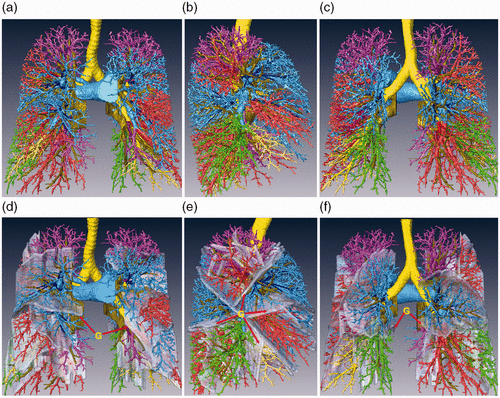Thermo Fisher Scientific › Electron Microscopy › Electron Microscopes › 3D Visualization, Analysis and EM Software › Use Case Gallery
Each pulmonary segment is an anatomical and functional unit. However, it is fundamentally difficult to precisely distinguish every pulmonary segment using the conventional pulmonary intersegmental planes from computed tomography images. Building arteriopulmonary segments is likely to be an effective way to identify pulmonary segments.

The three-dimensional reconstructed images showed the branches of the pulmonary artery ramified up to their eighth order covering the entire lung as well as evident intersegmental gaps without pulmonary arteries. The segmental artery was closely accompanied by the segmental bronchi in 486 pulmonary segments (90% of total number of segments). The size and spatial location of the pulmonary mass within a pulmonary segment were also clearly visible.
Once all the CT images were aligned, the anatomic structures of interest were extracted in the transverse, sagittal, and coronal planes using the semi-automated segmentation tools provided by Amira 4.1 software (Visualization Sciences Group, Bordeaux, France in collaboration with Zuse Institute, Berlin, Germany). The different segmental bronchi were marked with different colors to delineate the bronchi (Figure 1(a)). The pulmonary arteries were also segmented, and the different segmental arteries were marked with the same color as the adjacent bronchi with different intensity (Figure 1(b)). All pulmonary veins were also segmented and marked with brown (Figure 1(c)), while the intersegmental gaps without arteries were marked with gray (Figure 1(d)). Finally, the pulmonary mass was segmented and marked with green (Figure 1(e), (f)). Using Amira software, we could compute the diameter, length, angle, and quantity of the pulmonary arteries. The quantity, location, and route of the intersegmental vein surrounding every segment were also visible. Moreover, the spatial location of the mass in a pulmonary segment could be observed in any imaging direction, and the size of the mass could be quantified using Amira software. In short, our novel method provided the detailed anatomical structure of every segment before pulmonary segmentectomy. This is a great improvement that can be used to guide operations, even intraoperatively.
For Research Use Only. Not for use in diagnostic procedures.